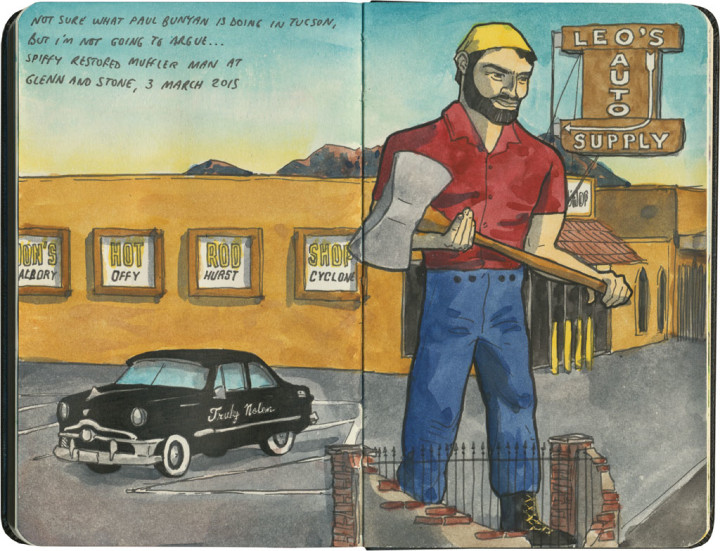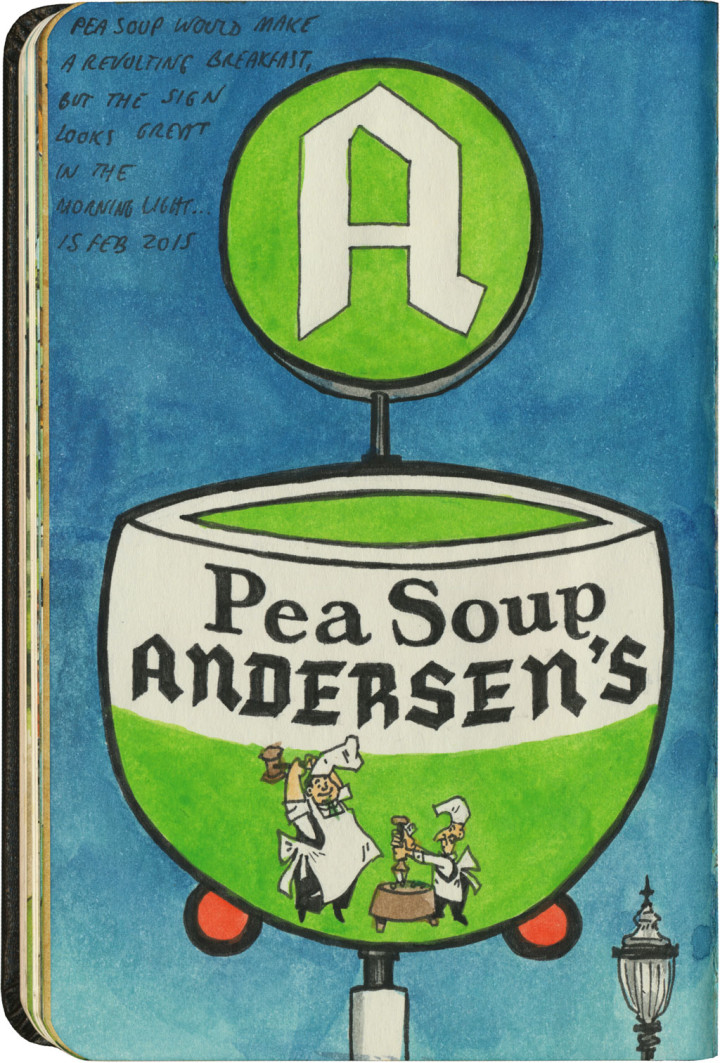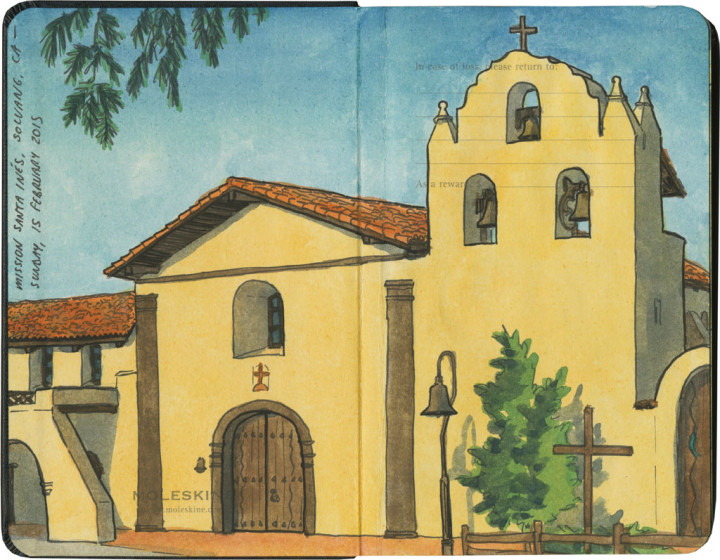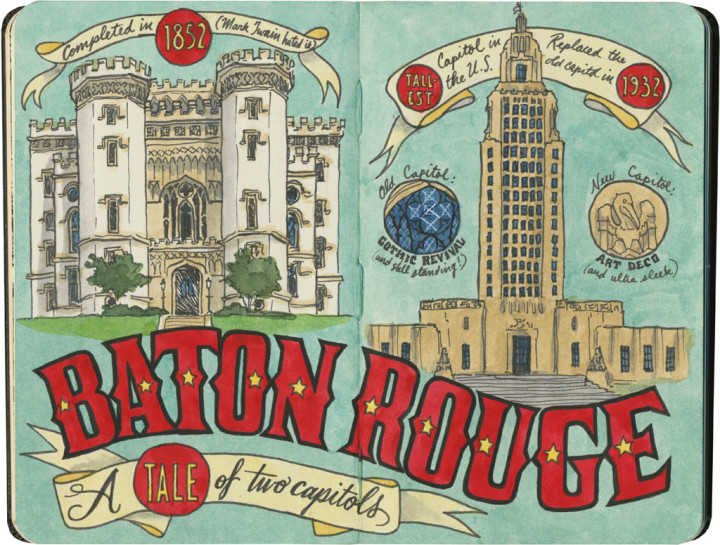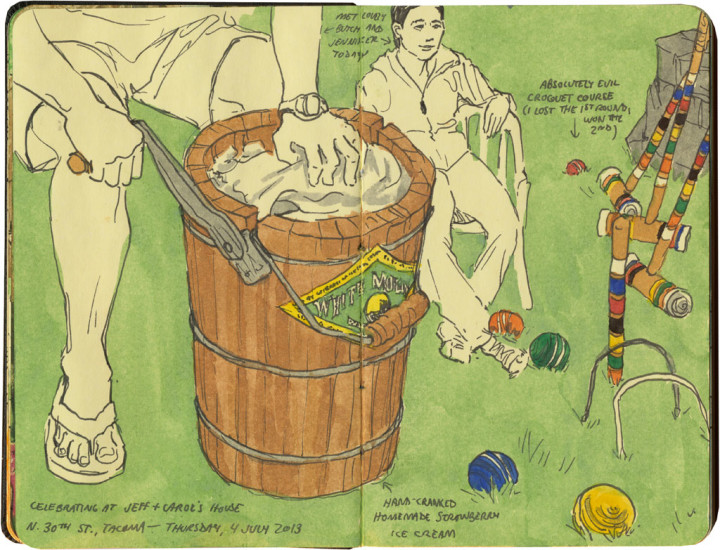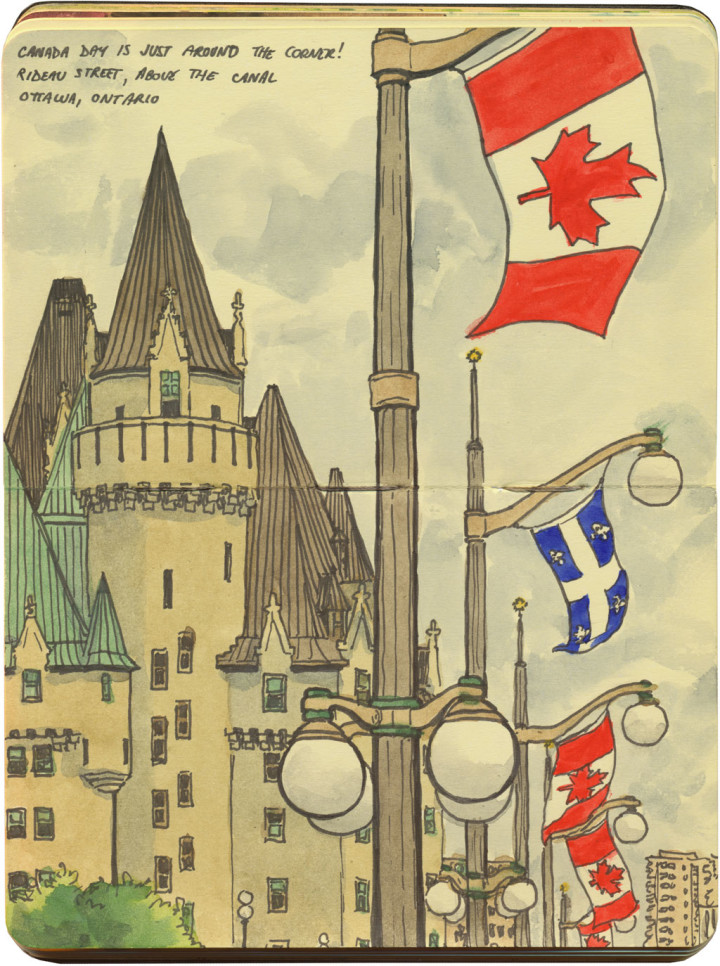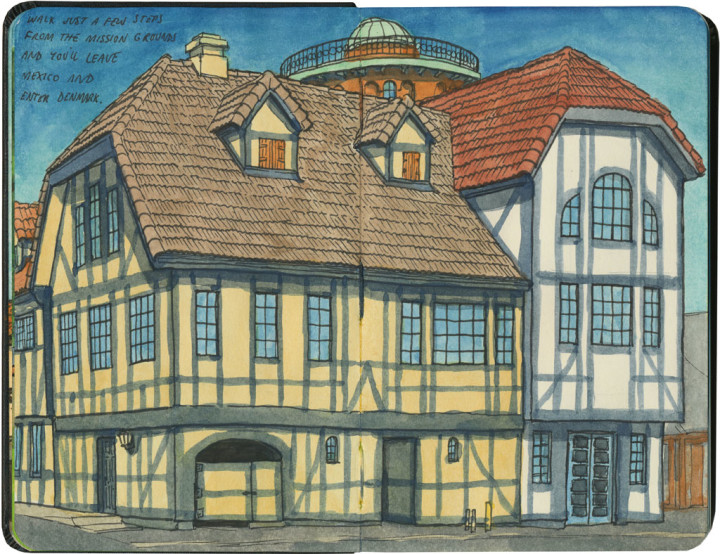
I think you know by now that I’m a fan of roadside attractions—anything cheesy, hokey, corny and kitschy has a special place in my heart. But I need to clarify something: I’m pretty snobbish about my kitsch. It’s got to be either bizarre but well-executed, or so bad it’s good, or of epic scale—or else just so wonderfully earnest that no matter how lame it is, it melts my heart.
Solvang, California is none of the above, and I’m not sure how I feel about that.
Despite having a Spanish mission on site for a hundred years already, the hamlet of Solvang was founded and settled in 1911 by Danish immigrants coming from the American Midwest. Its famous half-timbered mock-Danish architecture, however, didn’t start appearing until after World War II. Some of the buildings—like the 1991 scale replica of Copenhagen’s Rundetårn, of which you can just see a snippet at the top of the above sketch—are very recent additions.

But the thing about Solvang is that all that ersatz European architecture is pretty darn well done: the craftsmanship is all reasonably solid and the theme is consistent throughout town. And that kind of irritates me!
There’s something else, too: Wall Drug, and the Corn Palace, and Lucy the Elephant, and all the other roadside greats might be oddball anomalies and hokey destinations—but weird as they are, each is the genuine article. Solvang is a replica—worse, an approximation—of something that already exists. If I had the choice, I’d rather just buy a ticket to Denmark, and sketch the real thing.
And here’s the hardest part for me to swallow: Solvang is fake, sure, but it’s professional fakery—the kind you find at a theme park (incidentally, I loathe theme parks). The faux-Danish veneer is carefully considered and well-crafted enough to be attractive. I mean, I liked it well enough to take the time to sketch it, right? Yet the town doesn’t quite have the endearing charm of a place like Wall Drug: the overwhelming effect of an amateur with perhaps more skill than taste, more business savvy than artistry. It’s no Disneyland, thankfully (though the town’s copy of the Little Mermaid sculpture comes close), but it’ll never make my list of favorites.
I know, I know. What kind of nut case writes critical essays on the relative artistic merits of ersatz period architecture and oversized folk art? Well, my kind of nut case, apparently. I guess this is what happens when you send a chronic road-tripper to art school. Sigh.
So okay: Solvang gets a pass for being pretty—and for giving me access to fresh-baked æbleskivers. But I’d really like it if it also had a few lumpy concrete sculptures and clumsy ho-made signs to its name.

